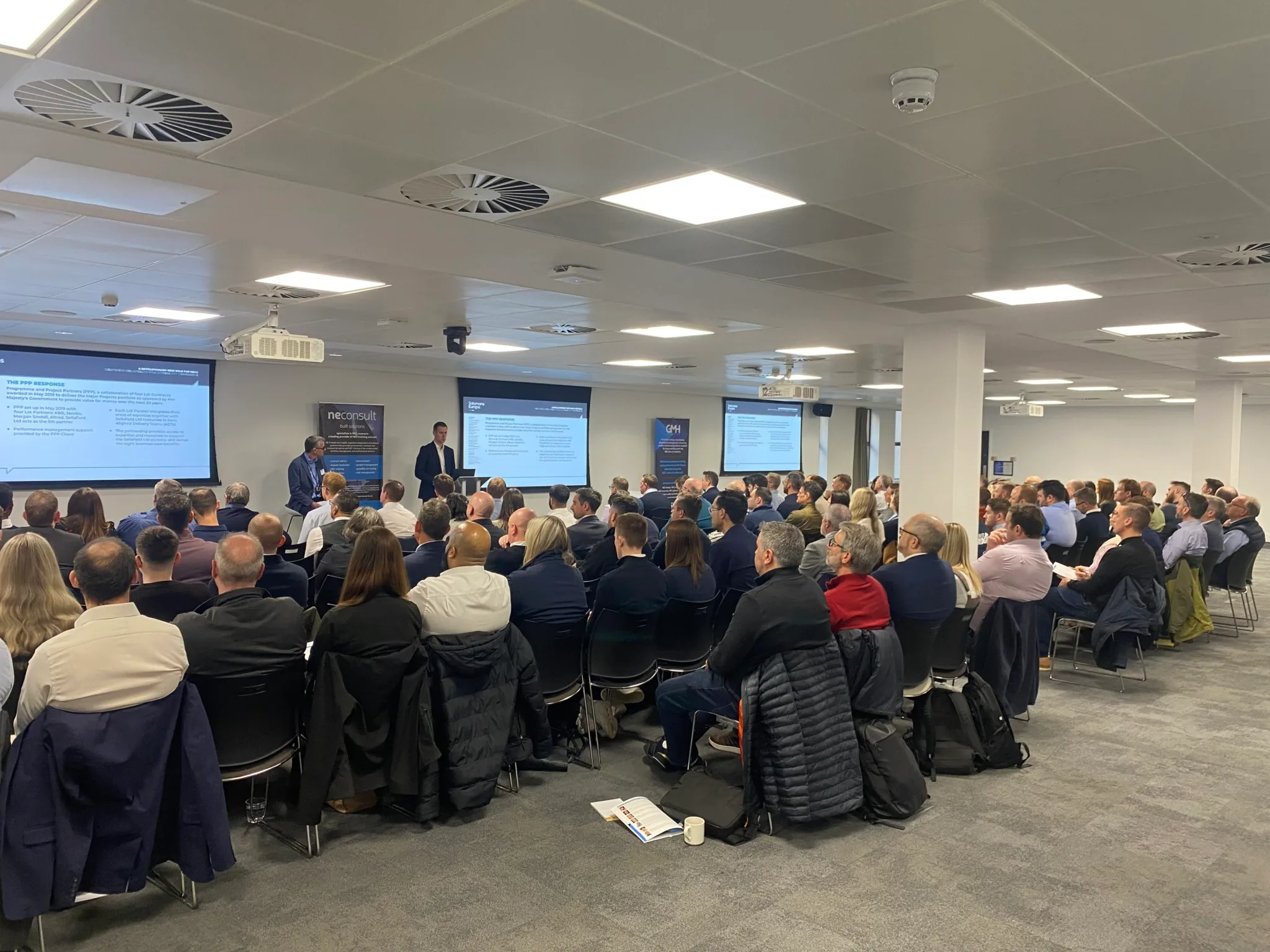Recent data from a survey of 150+ subcontractors (CECA & Hide, 2024) indicates that only around 33% currently use cloud-based NEC contract management software. Earlier this week, Brad Cahill presented these findings at the first NEC People’s Conference in Scotland, sharing real-world data and encouraging wider adoption across the supply chain.
The use of a contract within the NEC family is employed to manage projects between Clients and Contractors, with clear language designed to prevent disputes. However, this is not always the case with Contractor and Subcontractor settlements. In Hide’s Managing Subcontractors Bulletin (2022), he discussed how some contractors introduce bespoke contracts that manage these communications. However, these contracts only slow down processes with unnecessary, time-consuming issues and acceptances that can be avoided.
The misalignment is present in digital contract management systems, as it is utilised regularly for contractual reporting between client and contractors, but the same can’t be said for the Subcontractor/Contractor relationship. With only 33% of subcontractors adopting NEC contract management systems, many risks are not escalated early enough for contractors and project managers to act. As a result, both clients and contractors may be exposed to serious financial risks in addition to procedural non-compliance.
If we want to align with NEC’s ethos of mutual trust and co-operation, all tiers of the supply chain need to be integrated into the same NEC processes and systems. Projects will continue down the path of inefficiencies and unnecessary costs that NEC contracts were designed to eliminate unless subcontractor adoption increases.
Brad, who has closely observed the adoption of software in the subcontractor market, believes this slow uptake is largely due to two factors: a lack of encouragement from main contractors and the misconception among smaller firms that cloud solutions are too complex or expensive. However, these assumptions are increasingly outdated and overlook the tangible benefits that cloud adoption brings to subcontractors of all sizes.
Cloud-based NEC platforms provide real-time visibility of contracts, variations, and payments, eliminating the delays and confusion that often arise from fragmented communication channels. This visibility allows subcontractors to proactively track obligations and share updates with main contractors and peers, reducing disputes and fostering trust across the supply chain. As highlighted by the Civil Engineering Contractors Association (CECA), the increasing use of cloud-based NEC communication systems is revolutionary for the successful and sustainable administration of an NEC contract, providing a clear, auditable record of communications.
Compliance is another area where cloud adoption makes a measurable difference. NEC contracts are highly structured, with strict rules around notifications, approvals, and deadlines. Failing to meet these requirements can result in disputes, delayed payments, or financial penalties. Cloud platforms automate reminders, document tracking, and audit trails, helping subcontractors maintain compliance without adding administrative burden.
Importantly, the financial case for adoption is now clear. Today’s NEC platforms offer cost-effective, per-user subscription models, allowing subcontractors to scale their usage according to project size and budget. More significantly, independent case studies reveal striking cost savings and returns on investment. Even on smaller projects, digital adoption delivers extraordinary value. Data from Contract Bee shows that a £2 million NEC project achieved 322% return on investment, generating 568 hours of time savings and £25,165 in cost reductions. This example proves that cloud-based NEC software creates measurable efficiencies that translate directly into financial gains – regardless of project size.
Beyond efficiency and compliance, adopting cloud NEC software allows subcontractors to position themselves more competitively within the supply chain. By independently integrating digital systems, subcontractors demonstrate professionalism and readiness for complex projects even when adoption is not explicitly encouraged by the main contractor. This proactive approach signals reliability and a forward-thinking mindset, qualities that increasingly influence contractor selection and subcontractor relationships. Brad notes that cloud adoption is not merely a tactical improvement;
It is a strategic imperative. Subcontractors who embrace these tools can reduce administrative overhead, enhance collaboration, and focus on what matters most -delivering high-quality work on time. Furthermore, as the construction industry increasingly moves toward integrated digital ecosystems, subcontractors who adopt cloud NEC platforms today will be better prepared to participate in future supply chains.
Ultimately, the message is clear. Subcontractors need not wait for contractors to mandate cloud adoption. With affordable, flexible solutions available and with hard evidence of substantial cost savings and ROI, the onus is on subcontractors to take control of their digital transformation. By doing so, they not only streamline operations and reduce risk but also strengthen their position in the supply chain, ensuring long-term growth and resilience in an increasingly competitive market.



